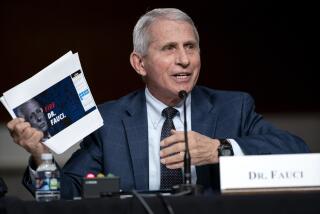Income, Spending Rise; New Home Sales Take Off
Americans were earning more and spending more last month, but only at a moderately quicker pace after unusually sharp increases in February. Meanwhile, the housing industry shook off winter doldrums and took off in March despite climbing interest rates.
“The latest set of data suggests that the economy is emerging from its winter hibernation, but at a much slower pace than that witnessed in the fourth quarter of last year,” said economist Jose Rasco of Merrill Lynch & Co.
The Commerce Department reported Friday that personal income rose 0.6% in March and consumer spending nearly kept pace, rising 0.4%.
The department revised estimates upward for February as unusual factors sent incomes up 1.8% and spending up 1.3%.
The February income jump was the biggest since it soared 5.1% in December, 1992.
The February rise in consumer spending, which represents two-thirds of the nation’s economic activity, was the largest since September, 1992, when it increased 1.7%.
Spending has risen in 11 of the past 12 months, declining only in January, when it slipped 0.1%.
The government said sales of new homes jumped 11.1% in March, the biggest increase in six months, as the housing industry rebounded from winter storms and frigid cold.
All regions participated in the gain except for the Midwest, where sales slipped slightly. The Northeast experienced a double-digit advance.
Sales totaled 739,000 at a seasonally adjusted annual rate, up from a revised 665,000 in February. The original February estimate was 649,000.
Fixed-rate, 30-year mortgages averaged 7.68% in March, compared to 7.15% a month earlier. Rates were at 8.32% on Thursday.
Analysts said the latest government statistics buttress reports that the economy is expanding at a moderate rate and that inflation, while increasing, is well in check.
The Commerce Department said incomes rose to a seasonally adjusted annual rate of $5.63 trillion in March from $5.60 trillion in February. Spending was up to a seasonally adjusted annual rate of $4.58 trillion from $4.56 trillion in February.
The sharp February advances were due to higher farm subsidies and a rebound from the depressing effects of the Northridge earthquake on rental income.
Disposable income--income after taxes--also rose 0.6% in March, the seventh advance in eight months. It jumped 2% in February after dipping 1.1% in January.
The combination of incomes and spending means that Americans’ savings rate--savings as a percentage of disposable income--climbed to 4.1% in March from 3.9% in February. The savings rate was the highest since 4.3% in December.
A key component of the income category, wages and salaries, totaled $3.21 trillion, up from $3.20 trillion a month earlier.
Almost all of the spending increase was for durable goods--those expected to last at least three years--with car sales leading the way.






